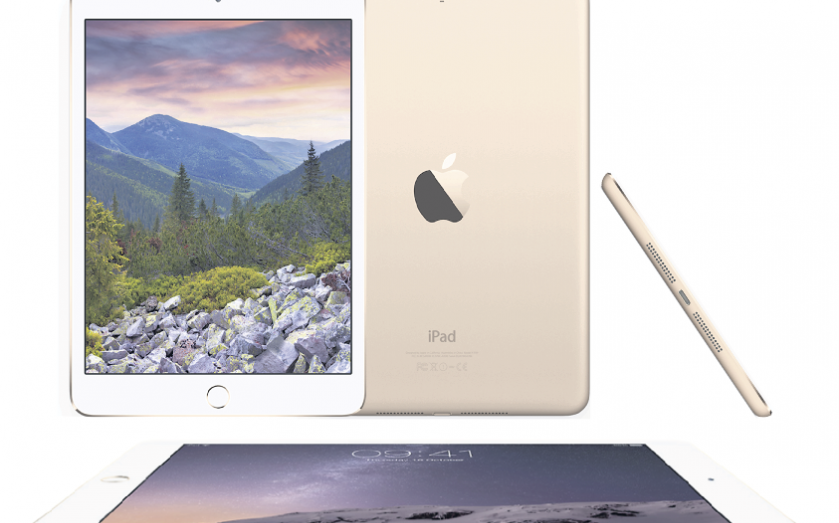Review: iPad Air 2 and iPad Mini 3

iPad Air 2: ★★★★★
From £399 for 16GB wi-fi only
iPad Mini 3: ★★★☆☆
From £319 for 16GB wi-fi only
Apple products are like buses, if buses were only 6.1mm thick, featured the kind of technology people could only dream of a decade ago and came in gold. Wait, no, they’re like buses because you wait ages for a new one to come along and then you get loads at once; two new iPhones last month and now two new iPads: the Air 2 and the Mini 3.
Let’s start with the 9.7-inch iPad Air 2 – what’s new? Well, it’s thinner, which will please you if you suffer from iPad dysmorphia and couldn’t bear the sight of the grotesquely bloated 7.5mm version. The new one is just 6.1mm and weighs a feather-light 437g. This really is remarkable; surely we’re now approaching the point at which reducing the thickness becomes a) undesirable and b) physically impossible. For now, though, it’s still hugely impressive, and makes the device a breeze to hold for long periods.
The Retina display is pretty much the same as the previous generation iPad Air, although it benefits from the thinner design, which means the icons appear to float even closer to the top of the screen. The front and rear cameras have both been improved, with the rear iSight camera upgrading from 5 to 8MP, allowing you to take surprisingly good pictures, although it still lags slightly behind the iPhone 6 camera.
This is typical of the iPad family – the newest features tend to hit the phones first and are introduced to the tablet range a year later. Case in point: while the iPad Air 2 is a beautiful machine, it retains the bevelled-edge design from the previous generation, while the equivalent new iPhone replaced the bevel with a new curved glass design. Also following this logic, the Air 2 now comes with the touch-sensitive finger-print scanner that the iPhone introduced last year, and it’s a massive plus for anyone who is well-versed in using the feature on their phone.
Of course, the device is also faster than its predecessor, with 40 per cent more processing power thanks to Apple’s new A8X chip. Right now there aren’t many apps that will push it anywhere near its capacity, but it’s dealt admirably with everything I’ve thrown at it since I got my hands on it. With the iPad Air 2, Apple has easily defended its position as the best tablet maker in the world.
The iPad Mini 3 is a slightly different proposition: it doesn’t come with the latest A8X chip, retaining the A7 of the Mini 2; it remains 7.4mm thick and doesn’t have the upgraded 8MP front-facing camera. It’s essentially the iPad Mini 2 with a fingerprint scanner. I’ve long expressed reservations about the practicality of the 7.9-inch display – too big to fit into a pocket but too petite to get the full benefits of a tablet screen – and now the superb iPhone 6 Plus occupies the phablet segment of the market, I can see even less reason to pick up the Mini, especially when the cheapest version only saves you £80 over the Air 2. To complicate things further, the iPad Mini 2 is still available for £239, which is far better value (the original Mini is still available for £199, but the sacrifice in specs is too much for the further £40 saving).
That said, if I were on the lookout for a compact tablet, I’d say the iPad Mini 2 is still your best option. This is one of Apple’s core strengths; it’s so far ahead of the tablet market that your average user only really needs to update their device every second generation.
Even the iPad Air 2, which has a load of cool new features, would be a rather profligate purchase for anyone who bought the iPad Air last year. There’s no single killer addition that makes it a must buy. But if you own a pre-Air iPad, upgrading to the new one is a no brainer, and you know you’ll get at least two years’ solid use from it before you need to think about getting a new one.
